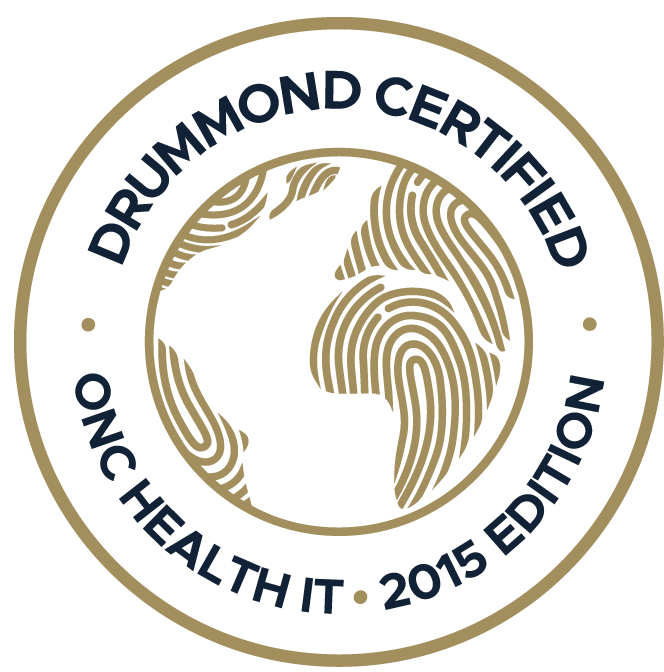Effective use of an EHR dashboard can boost your practice efficiency by up to 40%. While forward-thinking practices have already begun adopting single-point dashboards, many still limit their use to surface-level...
The insurance reimbursement process involves hectic paperwork, policies, and patient-testing wait times. Whether you're a healthcare provider or a patient, understanding the ins and outs of this procedure is crucial for ensuring you're adequately compensated without unnecessary delays.
In today's digital age, Electronic Health Record (EHR) software, specifically Practice EHR systems, have become invaluable tools in streamlining the complex pathway of insurance claims. Statistically, a study revealed that integrating EHR platforms can reduce billing errors by as much as 30%, underscoring their billing and reimbursement cycle efficiency.
This blog post will discuss the insurance reimbursement process and bring insights on leveraging EHR software like Practice EHR to your advantage so you can streamline your insurance processes, ensuring efficient, timely reimbursements and a sharper focus on patient care.

Understanding Insurance Reimbursement
Insurance reimbursement, while essential, often feels like a puzzle with too many moving pieces. At its core, it refers to the process by which healthcare providers submit claims to insurance companies and receive payment for services rendered.
But it's not straightforward. Every insurance plan has its rules, which can change how a claim is made. Doctors need to use special medical codes to describe treatments, and these codes must match the insurance's list, or the claim might get denied. Plus, they have to check if a patient's insurance covers their needed treatment. All these parts must fit together just right for the process to work.
The Role of EHR Software in Insurance Reimbursement
Electronic Health Records (EHR) software has changed how the healthcare world works by replacing old paper records with digital ones. This tech makes patient information accessible to reach, update, and keep safe. For insurance payments, EHRs are game-changers.
Software like Practice EHR especially shines because it's built to help with insurance claims. It ensures doctors give all the details insurance companies need in the proper format. This reduces mistakes and speeds up the process of getting paid. Providers can quickly send and manage claims, meaning less waiting and confusion. In short, EHRs like Practice EHR help healthcare providers get through the insurance reimbursement maze faster and with fewer headaches.

Step-by-Step Guide to Navigating the Reimbursement Process
To successfully move through the insurance reimbursement process, healthcare providers must follow a straightforward, step-by-step approach:
● Patient Check-In:
At the start, when a patient checks in, it's crucial to gather their insurance details with precision. Every piece of information must be checked and double-checked for accuracy. This includes their policy number, coverage details, and personal identification to avoid any later hiccups.
● Documentation:
Every healthcare provider's service must be recorded in detail in the Electronic Health Records (EHR) system. This isn't just about tracking what was done; it's also about creating a clear, digital history of the patient's care, which is vital for insurance claims.
● Coding:
The provider must carefully assign the correct diagnostic and procedural codes for the services rendered. These codes are a universal language for insurers, telling them precisely what was done during the patient's visit. Correct coding is essential to ensure the insurance company recognizes and reimburses the services.
Each step is a critical link in the insurance reimbursement chain, contributing to a smooth, efficient process that ensures providers are paid for their services promptly.
Practice EHR for Insurance Reimbursement
Maximizing the full potential of Practice EHR can significantly streamline how healthcare providers handle insurance reimbursements. The system's user-friendly interface is just the beginning. It allows providers to easily navigate patient records, billing, and coding, which means less time clicking through complicated menus and more time focused on patient care.
Moreover, Practice EHR's expansive coding library is a treasure trove of diagnostic and procedural codes crucial for creating accurate claims. With such resources at their fingertips, providers can reduce the likelihood of coding errors that often lead to claim rejections or delays in payment.
The software boosts efficiency with features like automatic eligibility verification, which checks a patient's insurance coverage with a button. This reduces the time staff would otherwise manually verify insurance, reducing the risk of surprise coverage issues during service.
Claims management is yet another highlight. Practice EHR simplifies the claim submission and tracking process, allowing for quick identification and correction of rejected or denied claims. This means providers can resubmit corrected claims faster, improving cash flow.
Lastly, with real-time reporting, healthcare providers can gain instantaneous insights into their practice's financial performance. They can track pending claims, payments received, and outstanding balances, leading to better financial decisions and healthier practice revenue. When used to its full potential, Practice EHR smoothes out the reimbursement process and empowers providers with tools and data to optimize their practice’s financial health.
Conclusion
When running a medical practice, dealing with insurance can be complicated and time-consuming. However, by using Practice EHR and good practice management, you can streamline this process and have more time to focus on giving your patients the best possible care.
Practice EHR automates many of the tasks of running a medical practice, from scheduling appointments to submitting insurance claims. By using it, you can make your practice more efficient and effective.
Topics: Integrated EHR, Healthcare Office Management, RCM, EHR, Technology in Healthcare, Practice Management Software, Insurance Reimbursement
RECENT POSTS



TOPICS
- EHR Solution (192)
- EHR (127)
- digital age (119)
- Patient Care (117)
- Medical Billing (112)
- Specialty-Specific EHR (112)
- Industry Update (98)
- Technology in Healthcare (84)
- EHR Features (79)
- Small Practice (78)
- Medical billing services (74)
- Integrated EHR (63)
- RCM (63)
- HIPAA Security (62)
- New Technology (44)
- Cloud-based EHR (43)
- Telemedicine (43)
- Healthcare Office Management (40)
- Practice EHR News (38)
- Kiosk (31)
- Revenue Cycle Management (28)
- AI Solutions (25)
- ePrescribing (21)
- AI Scribing (17)
- Best EHR Software (17)
- Practice Management Software (13)
- AI-powered Medical Billing (12)
- EMR (12)
- AI EHR (11)
- Practice Automation (11)
- TeleVisit (11)
- Client Favorites (10)
- The ONE (10)
- AI Scribe (9)
- Switching to New EHR (9)
- Best EHR Practice (8)
- EHR Integration (8)
- MACRA/MIPS (8)
- Patient Portal (8)
- Psychiatry EHR (8)
- Urgent Care (8)
- AI scanning (7)
- Automated Health Tools (6)
- E-Prescribing (6)
- Medical Practice Management Software (6)
- Product Updates (6)
- events (6)
- MIPS (5)
- Mobile EHR (5)
- Family Medicine EHR (4)
- HIPAA (4)
- Insider (4)
- Integrated Practice Management (4)
- Internal Medicine EHR (4)
- MIPS Reporting (4)
- Multilingual AI Scribe (4)
- Orthopedics EHR (4)
- Podiatry (4)
- Podiatry EHR (4)
- Regulatory Updates (4)
- Telehealth Platform (4)
- Telehealth Platforms (4)
- Chiropractic EHR (3)
- Digital Experiences (3)
- EHR Flaws (3)
- EHR Implementation (3)
- EHR for Chiropractors (3)
- EHR for Small Practices (3)
- Eligibility Verification in Medical Billing (3)
- Medical Coding Services (3)
- Patient Check-in Kiosk (3)
- PracticeEHR GO App (3)
- Automated EHR (2)
- Cash Flow (2)
- Cashless Payments (2)
- Clearinghouse (2)
- Dermatology EHR (2)
- EHR Scheduling (2)
- Family Medicine (2)
- Foot and Ankle Care (2)
- Foot and Ankle EHR (2)
- Health records 101 (2)
- Healthcare Compliance Certification (2)
- Medical Billing Partner (2)
- Medical Credentialing (2)
- Pediatrics EHR (2)
- Quality of Patient Care (2)
- Reporting Under MIPS (2)
- Risk and Liability in Medical Settings (2)
- Voice-Activated AI Scribe (2)
- What Works Clearinghouse (2)
- ACA Subsidy (1)
- AI Scan (1)
- AI Scribe for Pediatric Care (1)
- Bariatric EHR (1)
- Behavioral Health Practices (1)
- Billing Communication (1)
- Billing for Private Practices (1)
- Cardiology EHR (1)
- Charting (1)
- Data Security (1)
- Dos and Don'ts (1)
- EHR Dashboard (1)
- EHR Guides (1)
- EHR KPIs (1)
- EHR Questions to Ask (1)
- EHR Transition (1)
- EHR for Chronic Illness (1)
- EMR vs EHR Difference (1)
- ENT EHR (1)
- Endocrinology EHR (1)
- Gastroenterology (1)
- Gastroenterology EHR (1)
- General Surgery EHR (1)
- Geriatric AI scribe (1)
- Geriatrics EHR (1)
- Guides (1)
- Healthcare Practice Office Management (1)
- Help Center Videos (1)
- Insurance Reimbursement (1)
- KPI (1)
- Key Performance Indicators (1)
- Lab Processing (1)
- MACRA (1)
- Nephrology EHR (1)
- Neurology EHR (1)
- Pain Management EHR (1)
- Patient Behavior (1)
- Pediatric Care (1)
- Physical Therapy EHR (1)
- Practice Cash Flow (1)
- Practice Efficiency (1)
- Pulmonology EHR (1)
- Reconsider Your EHR (1)
- Simplify Practice Management (1)
- Staffing in Healthcare (1)
- Switch Medical Billing Providers (1)
- Urgent Care Medical Billing (1)
- Urology EHR (1)
- insurance claim denials (1)








